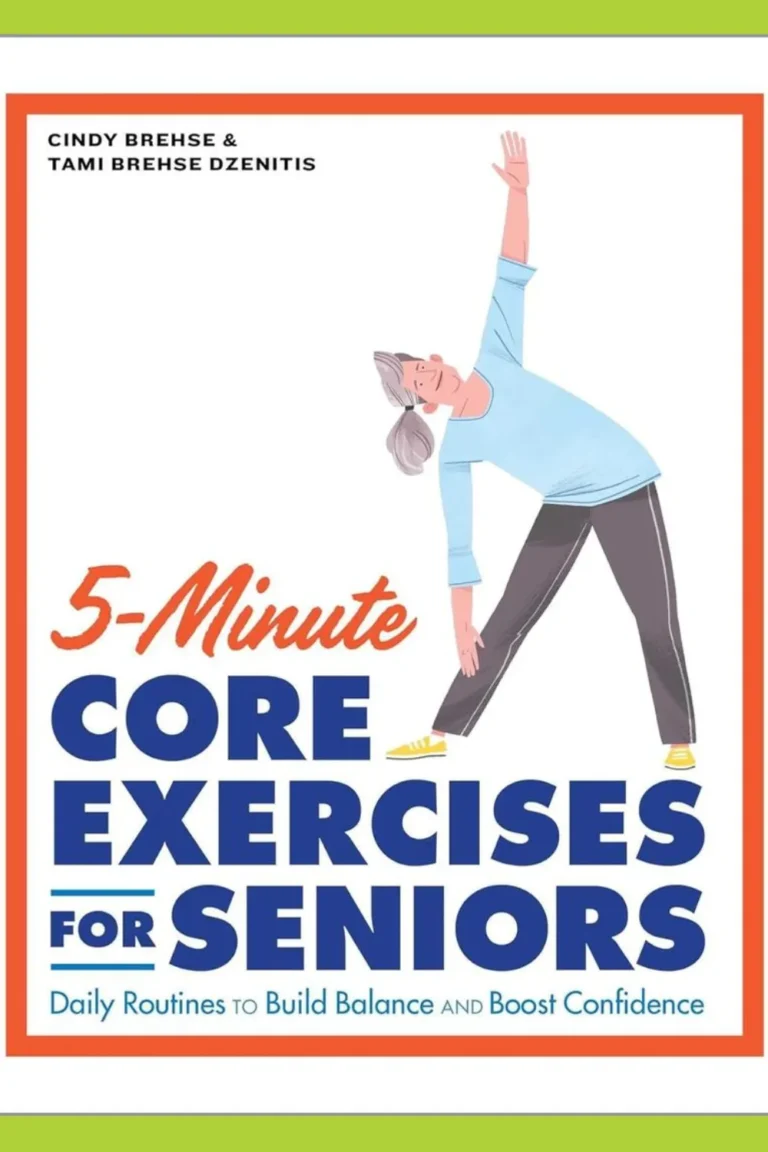Everyday Exercise Safety Tips
Exercise is an integral part of maintaining physical and mental well-being.
Whether it be going for a morning jog, hitting the gym, or practicing yoga, regular physical activity has numerous benefits for our overall health.
However, it is important to remember that with any form of exercise, there are potential risks involved.
From minor injuries to more serious accidents, it is crucial to prioritize safety when incorporating physical activity into our daily routines.
In this article, we will discuss some essential everyday exercise safety tips to help you stay injury-free and make the most out of your workouts.
These tips are designed to not only prevent injuries but also enhance your exercise experience, allowing you to achieve your fitness goals in a safe and sustainable manner.
So whether you are a seasoned athlete or just starting your fitness journey, read on to learn how to exercise safely and effectively for a healthier and happier you.
Table of Contents Everyday Exercise Safety Tips
Warm-up before exercising to prevent injury
Prior to engaging in any physical activity, it is imperative to allocate an adequate amount of time for a proper warm-up routine.
This crucial step prepares the body for the upcoming exertion, minimizes the risk of injury, and enhances overall performance.
A well-designed warm-up should incorporate dynamic stretches, light cardio exercises, and movements that mimic the upcoming activity.
By gradually increasing the heart rate, increasing blood flow to the muscles, and loosening the joints, a warm-up primes the body for optimal performance while reducing the likelihood of muscle strains, sprains, and other common exercise-related injuries.
Neglecting this essential component can lead to compromised performance, hindered progress, and potential setbacks in achieving fitness goals.
Therefore, it is strongly advised to prioritize a thorough warm-up routine as an indispensable part of any exercise regimen.
Stay hydrated and take breaks
In addition to a proper warm-up, another crucial aspect of everyday exercise safety is to stay hydrated and take regular breaks.
Hydration plays a vital role in maintaining optimal physical performance and preventing dehydration-related complications.
During exercise, the body loses fluids through sweat, which must be replenished to avoid dehydration.
It is recommended to drink water before, during, and after your workout session to stay properly hydrated.
Additionally, taking regular breaks during your exercise routine allows your body to rest and recover.
This not only helps prevent fatigue and overexertion but also reduces the risk of injuries.
So remember, keep a water bottle nearby and listen to your body’s signals when it’s time to take a break and rehydrate.
Your safety and overall exercise experience will greatly benefit from these simple yet essential practices.
Use proper form and technique
To maximize the effectiveness of your exercise routine and minimize the risk of injury, it is essential to use proper form and technique.
Whether you’re lifting weights, performing yoga poses, or engaging in any other form of exercise, correct alignment and execution are key.
When you maintain proper form, you engage the correct muscles and reduce the strain on other body parts.
This not only helps you achieve better results but also reduces the risk of overuse injuries or muscle imbalances.
Take the time to learn the proper form for each exercise and pay attention to your body’s alignment throughout the movement.
If you’re unsure about the correct technique, consider working with a qualified trainer who can guide you and provide valuable feedback.
By prioritizing proper form and technique in your everyday exercise routine, you’ll enhance both the safety and effectiveness of your workouts.
Wear appropriate workout attire
Choosing the right attire for your workouts is an important aspect of maintaining safety and comfort during exercise.
Opting for appropriate workout attire can help optimize your performance and reduce the risk of injury.
When selecting your workout clothes, consider the nature of the activity you will be engaging in and choose garments that allow for freedom of movement.
Look for moisture-wicking fabrics that help keep you dry and comfortable by drawing sweat away from your body.
Additionally, invest in supportive footwear that provides stability and cushioning for your specific type of exercise.
Wearing the appropriate workout attire not only enhances your workout experience but also ensures that you can exercise with confidence and minimize the potential for discomfort or injury.
Listen to your body’s limits
It is crucial to listen to your body’s limits during exercise to prevent overexertion and injury.
Pay attention to any discomfort, pain, or unusual sensations that arise during your workout.
Pushing through extreme fatigue or ignoring warning signs from your body can lead to serious consequences.
If you experience sharp or persistent pain, dizziness, shortness of breath, or any other concerning symptoms, it is important to stop and seek medical attention if needed.
Remember that everyone’s fitness level and capabilities are different, so it is essential to respect your body’s limits and progress at a pace that is suitable for you.
By listening to your body and making adjustments accordingly, you can ensure a safe and effective exercise routine.
Gradually increase intensity and duration
To maximize the benefits of your exercise routine and avoid potential injuries, it is recommended to gradually increase the intensity and duration of your workouts.
This approach allows your body to adapt and build endurance over time, reducing the risk of overexertion.
Start by setting realistic goals and gradually increasing the intensity or duration of your workouts by small increments each week.
For example, if you are jogging, you can increase your speed or distance by a small percentage each week.
By gradually challenging your body, you can improve your fitness level without placing excessive strain on your muscles and joints.
Remember to listen to your body’s signals and adjust your routine accordingly.
Gradually increasing intensity and duration is a safe and effective way to achieve long-term fitness goals.
Incorporate rest days into routine
It is important to incorporate rest days into your exercise routine to allow your body time to recover and repair.
Rest days are essential for preventing overuse injuries and avoiding burnout.
When we engage in physical activity, our muscles undergo microscopic damage that needs time to heal.
Rest days also give our central nervous system a chance to recharge and restore balance.
While it may be tempting to push yourself every day, it is crucial to listen to your body and prioritize rest.
Aim for at least one or two rest days per week, where you engage in lighter activities or focus on stretching and mobility exercises.
By incorporating regular rest days into your routine, you can maintain a healthier and more sustainable approach to exercise.
Consult a doctor before starting
Before embarking on any new exercise regimen, it is highly recommended to consult with a qualified healthcare professional, such as a doctor or a certified fitness trainer.
They can assess your overall health and provide personalized advice based on your specific needs and medical history.
Consulting a doctor before starting a new exercise program is especially crucial if you have any pre-existing medical conditions, such as heart disease, diabetes, or joint problems.
They can help ensure that your chosen exercises are safe and appropriate for your individual circumstances, and may even be able to provide guidance on modifications or alternative activities to accommodate any limitations you may have.
By seeking professional guidance before starting, you can minimize the risk of potential injuries and maximize the benefits of your exercise routine.
Remember, your health and safety should always be the top priority.
In conclusion, staying safe while exercising is just as important as staying active.
By following these everyday exercise safety tips, you can reduce your risk of injury and ensure a more enjoyable workout experience.
Remember to always listen to your body, use proper form, and consult a professional if you have any concerns.
With these precautions in mind, you can continue to prioritize your health and well-being through regular exercise.
FAQ
What are some important safety precautions to keep in mind when exercising outdoors, such as running or biking in the park?
When exercising outdoors, it is crucial to wear proper footwear and clothing, stay hydrated, and be aware of your surroundings.
Always warm up before starting your workout and cool down afterwards to prevent injuries.
Make sure to follow traffic rules if you are running or biking on the road, wear bright or reflective clothing, and use lights if exercising during low light conditions.
It’s also important to let someone know your route and estimated return time for safety.
Lastly, listen to your body and stop exercising if you feel unwell or experience any discomfort.
How can proper warm-up and cool-down routines help prevent injuries during everyday exercise activities?
Proper warm-up routines increase blood flow to muscles, improve flexibility, and prepare the body for exercise, reducing the risk of injury.
Cool-down routines help lower heart rate, prevent muscle stiffness, and promote recovery, reducing the chances of post-exercise injuries.
By incorporating both warm-up and cool-down activities into a workout routine, individuals can better prepare their bodies for exercise and minimize the risk of injuries during everyday activities.
What are some common mistakes people make when lifting weights at the gym, and how can they be avoided to prevent injuries?
Some common mistakes people make when lifting weights at the gym include using improper form, lifting weights that are too heavy, not warming up properly, and not allowing for adequate rest between sets.
To prevent injuries, individuals should focus on maintaining proper form, start with lighter weights and gradually increase the load, perform a proper warm-up routine, incorporate rest days into their workout schedule, and listen to their body to avoid pushing beyond their limits.
Seeking guidance from a qualified personal trainer can also help in avoiding common lifting mistakes and ensuring a safe and effective workout.
What are the signs of overexertion during exercise, and how should they be addressed to ensure safety?
Signs of overexertion during exercise include extreme fatigue, dizziness, nausea, chest pain, and difficulty breathing.
To address these signs, it is important to stop exercising immediately, rest, hydrate, and seek medical attention if necessary.
It is crucial to listen to your body, pace yourself, and gradually increase intensity to prevent overexertion and ensure safety during workouts.
Proper warm-up, cool down, and stretching are also essential in preventing overexertion injuries.
How important is hydration during exercise, and what are some tips for staying properly hydrated while working out?
Hydration is crucial during exercise as it helps regulate body temperature, maintain performance, and prevent dehydration.
To stay properly hydrated, it is recommended to drink water before, during, and after exercise, especially in hot conditions.
Electrolyte-rich drinks can also help replenish lost minerals.
Monitoring urine color and weight changes can be useful indicators of hydration status.
Sipping water regularly, rather than chugging it, and consuming foods with high water content can also aid in maintaining proper hydration levels during workouts.







